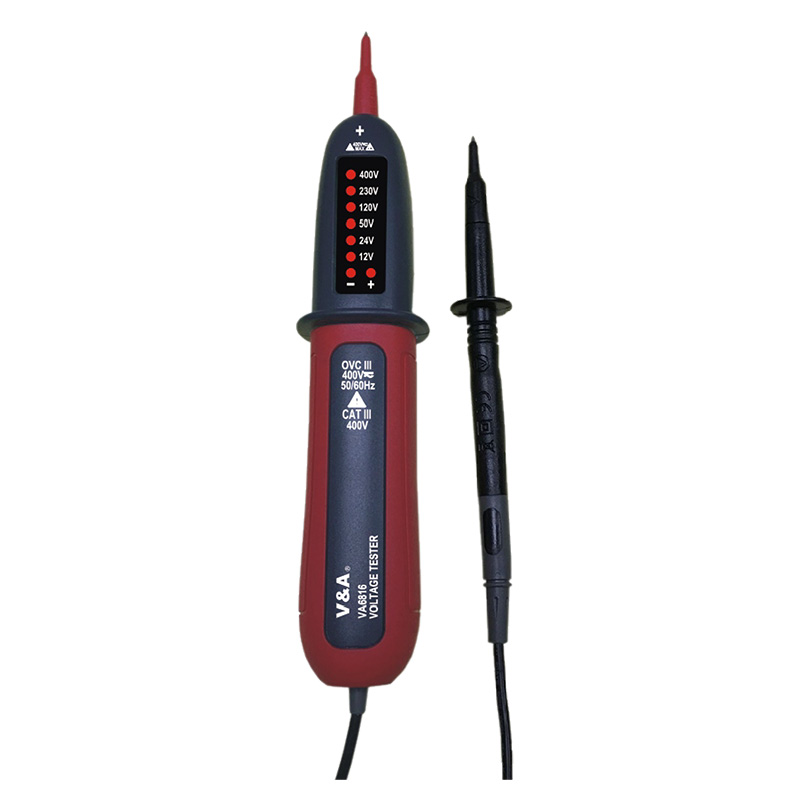


The Voltage Tester provides a simple and fast method of testing AC and DC voltage up to 400 volts. The different indicating signals of the Voltage Tester are not to be used for measuring purposes, it only means a voltage range, not the exact value. For example, when 120V idicator lights up, the measured voltage is in the range of 120V, it meant that the measured voltage value may be 120V, less than 120V or even more than 120V.
| Voltage LED Steps | 12/24/50/120/230/400V |
| Accuracy | -30% to 0% of indication |
| Response time | <0.1s |
| AC frequency range | 50/60Hz |
| Operation time | 30 seconds maximum |
| Recovery time | 10 minutes after maximum operating time has been reached |
| Beep alarm | >50V AV/DC *Option |
| operating temperature | -15℃~45℃ |
| storage temperature | -15℃~50℃ |
| relative humidity | 80% maximum |
| altitude | 7000ft (2000m) |
| safety | CATIII 400V, OVC III 400V |
| VA6816 | VA6816A | |
| Voltage | AC/DC | AC/DC |
| Range | 6/12/24/50/120/230/400V | 6/12/24/50/120/230/400V |
| Display | LED | LED |
| Resistor | / | / |
| Diode Test | / | / |
| Capacitor Test | / | / |
| AC/DC Indication | √ | √ |
| Polarity Indication | √ | √ |
| Backlight | / | / |
| Beeper | / | √ |
| Battery | / | / |
| Size | 223x40x32 mm | 223x40x32 mm |
| Weight | ~ 95g | ~ 95g |
A non-contact voltage tester is a useful tool for any kind of electrical work, and there’s no quicker or simpler way to safely check for electrical current in a wire, outlet, switch or an old lamp that has mysteriously stopped working.
1, keep the tester dry. If it gets wet, wipe it off.
2, use and store the tester in normal temperatures. Temperature extremes can shroten the life of the electronic parts and distort or melt plastic parts.
3, Handle the tester gently and carefully. Dropping it can damage the electronic parts or the case.
4, keep the tester clean. Wipe the case occasionally with a damp cloth. Do not use chemicals, cleaning solvents, or detergents.
